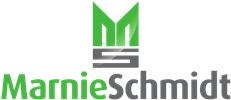
7.5.2 Creating and updating (documented information)
ISO9001:2015 changes terminology from “documents” to “documented information” in an attempt to clarify to the last remaining users who have yet to pry their paper documents out of their hands, the wide assortment of other media available for use in support of a quality management system. Most all organizations use other forms of media in their daily operations, communications, training, etc, but do not consider them “documented information” and therefore do not manage them the same as their other documentation. This clause casts an umbrella over those other forms of documentation and requires they be managed in some way.
This does complicate matters for some. I imagine a graphic much like the “evolution of man” chart when I think of the history of documentation and ISO9001. We started with paper documents which often included a revision history printed on the document itself. Then, we awkwardly evolved into electronic media by using spreadsheets and databases and later, document sharing tools like a “shared drive” on a network, which does provide a multimedia friendly environment. (But, how’d that work out for ya?) The use of document management tools like “SharePoint” add a measure of control, and now our horizons are starting open up about the many different ways to document and share our information. ISO9001:2015 is trying to tell us that this is great, but we mustn’t lose control as our creativity takes the reins.
The standard includes the following simple requirement:
“When creating and updating documented information the organization shall ensure appropriate:
a) identification and description (e.g. a title, date, author, or reference number);
b) format (e.g. language, software version, graphics) and media (e.g. paper, electronic);
c) review and approval for suitability and adequacy.”
This is not an earth shattering development, but I think it might have saved quite a few novice document control people a lot of headaches, had they created their systems with this solid foundation in the first place. Remember when I made mention of the “shared drive” earlier? Anyone remember the days of the paper manual + procedures? No worries, who EVER tried to proactively get a new procedure or document added (that wasn’t directly responsible for the quality management system)? But with the introduction of the shared drive, all sorts of stuff got dumped in there – forms, handbills, “homemade” procedures (duplicating the controlled ones) – none of which included the standard quality document characteristics like dates, revision numbers, etc. And it was always a mystery who had created them and who put them there.
So this clause restates the obvious about having a standard process for creating and updating documents. (The discussion of control comes next week, so we’ll talk more about that then). For now, it’s simply about deciding how documented information will be created and included. Then identifying a format (perhaps even defining some structure like templates, masters, etc). And finally, defining a process for review and approval.
Now back to the less obvious point here – what else may be considered a document, and therefore be subject to these requirements? Do you use videos, audio, web-based training or instructions? If they support the quality management system (ie – if they are necessary for any of the key processes you’ve identified), they should be included and managed with these requirements in mind.
THIS WEEK’S HOMEWORK
Review your quality system. Does it address the creation of documents? Does it tick all the boxes above? Does it apply to all the types of media in use in your organization (or have some things been missed or not yet captured)? Look for other types of documents you may not have previously considered “documents” per se. Are there guidelines on how they are created? What they should (or shouldn’t) contain? Has that been communicated within your organization? Make any adjustments you feel necessary to improving this part of your quality management system. We’ll talk control – distribution, storage, control of changes – next week. Stay tuned!
Stay involved and engaged – SUBSCRIBE!
